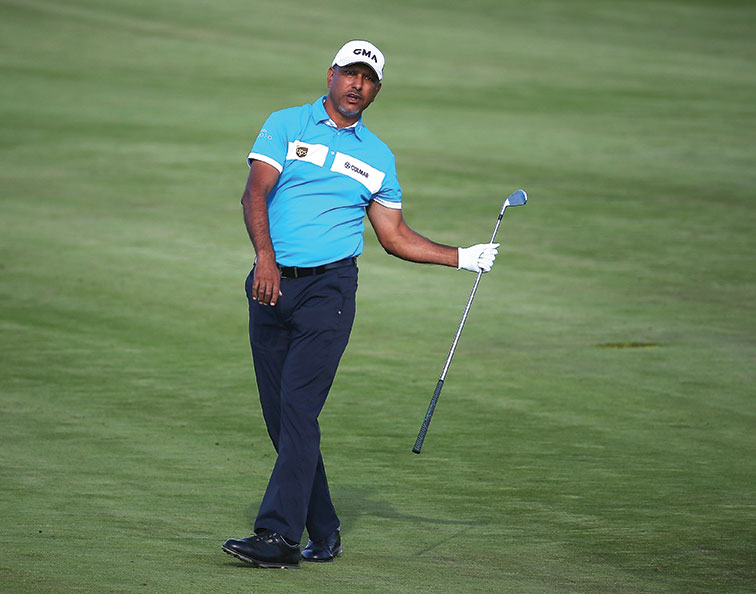MY CADDIE turns to me and asks, “Is this guy a pro?”
He was only half joking. We were playing in a European Tour co-sanctioned event at The Lakes in Sydney, but after 11 holes of the first round, the player in question had already hit two shanks, and was otherwise having a day at odds both with his reputation and any reasonable expectation of what a professional golfer might be capable of.
At the time, I just smiled. In the midst of this carnage, the guy could just as easily press the turbo button and birdie the next six holes. In my experience, mercurial and ordinary were compatible components for Jeev Milkha Singh. When he was ‘on’, there was hardly a golf course that could tame him. But when he wasn’t, his game could raise many an eyebrow; producing shots that made a club golfer feel like they still had a shot at the big time.

In fact, I’m not sure in the history of the professional game there has been a player with such a gulf between his best and worst. Arguably India’s greatest ever golfer (with honourable mentions to Arjun Atwal and Anirban Lahiri, who may in time surpass him), Singh came to the pro game with a golf swing built on feel and instinct. With his quite vertical setup, laid-off position at the top of the backswing and little leg hitch to start the downswing, there was never much about it that appealed aesthetically.
What you couldn’t immediately see was what a competitor the guy was, and just how much fire he had in his belly to succeed. Funky swing or not, when he saw the ball going straight, a switch was flicked in his mind that turned every flagstick into a green light. As the son of Milkha Singh, one of India’s most famous athletes, he also came armed with genes that carried a winner’s mentality. When the sum of the parts was added together, it made for a formidable opponent, and one who made his mark on the game very quickly.
At his best, few golfers in the world were able to go with him. In 1996 at the Philip Morris Asia Cup in Korea he blitzed a quality Asian field to win by double digits. Korea, with its tricky courses and parochial galleries was never an easy place for foreigners to win, which made the extent of his domination even more remarkable.
It was just a portent of things to come. To date, the ledger reads 21 professional victories, including four each on the European and Japan Tours. He’s played on every major professional tour, in some years managing to keep his tour card on the European, Japan and Asian Tours, all at the same time.
Perhaps his greatest asset was to never dwell on the past. In 2004, I played again with Singh at the first stage of US PGA Tour School in Nevada. He played some of the worst shots in living memory for two rounds, before pulling out after 36 holes and flying to Japan early to prepare for the following event there. I didn’t think there was any way he could turn it around in a couple of days given how badly he was playing. Remarkably, when I checked the results, there he was again, happily ensconced in the top 20, with another sizeable cheque to add to his overflowing bank account.
The old saying in golf is, “It’s not how, but how many”.
At 44, Jeev Milkha Singh has made a lucrative and memorable career proving that adage correct, again and again.




